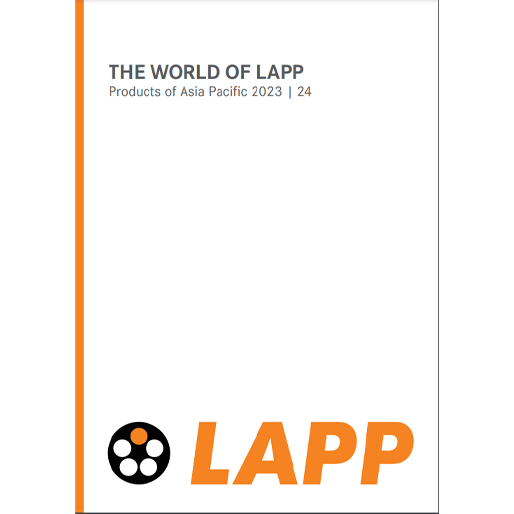Halogen-free cables and wires - How, what, when and, above all, why?


What are halogens?
Elements such as fluorine, chlorine, bromine, iodine and astatine are halogens and are in the seventh main group in the periodic table of the elements. They are found in many chemical compounds, chlorine, for example, polyvinyl chlorine id. PVC, as the abbreviation is, is very durable, which is why it is used in many technical products, including as insulation and sheath material in cables. Chlorine and other halogens are often added as additives to improve flame retardancy. However, this has its price. Halogens are harmful to health. For this reason, plastics that do not contain halogens are increasingly being used in cables.
What is a halogen-free cable?
As the name suggests, halogen-free cables and wires are free of halogens in the composition of the plastics. Halogen-containing plastics betrayed by the chemical elements in the name, such as the aforementioned polyvinyl chloride id, chloro pren rubber, fluorine ethylene-propylene, fluorine polymer rubber, and some more.
If you want or have to use halogen-free cables, you should make sure that they are made of plastics such as silicone rubber, polyurethane, polyethylene, polyamide, polypropylene, thermoplastic elastomers (TPE) or ethylene-propylene-diene rubber. They do not contain any harmful stabilizers made from heavy metals or plasticizers and the additives for flame protection are ecologically harmless.
How are halogen-free cables and wires called?
A cable or line is halogen-free if no halogens such as chlorine, fluorine or bromine are used in the insulation and sheath material of the cable or line. Cable glands, hose systems, connectors or shrink tubing, such as the protective hose PROTECT HF from LAPP, can also be made from plastics without halogens and are therefore halogen-free. If you need halogen-free lines and cables, for example, you should therefore pay attention to the following designations for the products:


In the course of time, some common names in the cable industry with regard to the labeling of halogen-free cables and wires have emerged. Depending on the manufacturer, you will come across names for halogen-free cables such as :


LAPP products can be identified by the letter H in the product name. For example with our control cable ÖLFLEX CLASSIC 110 H or more generally, the NHXMH sheathed cables as a halogen-free alternative to the PVC installation cable NYM. Halogen-free cable glands are identified by the letters HF. The SKINTOP® ST-HF-M cable gland and the SILVYN® shrink tubing are flame-retardant and self-extinguishing, halogen-free and offer a high level of functional reliability.
Why are halogen-free cables important for fire protection?
Halogens can be harmful to health. This is particularly the case when plastics containing halogen - above all PVC - burn. If a fire breaks out, hydrogen halides are released from the plastic. Halogens combine with water, such as fire fighting water, but also with the moisture in the mucous membranes, to form acids, chlorine becomes hydrochloric acid, and fluorine becomes highly corrosive hydrofluoric acid. In addition, a mix of dioxins and other highly toxic chemicals can arise. If they get into the airways, they can burn them and lead to death by suffocation. Even those who survive the fire can suffer from permanent damage to their health. This is far less the case with halogen-free cables.
For holistic fire protection, cables should also have flame protection and low smoke development. The flame protection delays catching fire and the spread of the flame and promotes self-extinguishing. Manufacturers are in a dilemma here, because chlorine and bromine are very good flame retardants and are therefore often mixed with plastics for cables. Because of the health hazards mentioned, this is controversial and only allowed where people are not endangered. LAPP therefore uses materials that are highly flame retardant but still do not contain halogens.
What is the advantage of halogen-free cables and wires?
benefits :
If halogen-free cables are strongly heated or burn, they form considerably less corrosive acids or gases that are harmful to health. ÖLFLEX® control cables or data cables of the UNITRONIC and ETHERLINE® brands are particularly suitable for use in public buildings, means of transport or in general where there can be high levels of personal, animal or property damage in the event of a fire. They have a low smoke density, so develop less smoke and make it easier for trapped people to find escape routes.
If you need a "halogen-free NYM cable", you can rely on our NHXMH sheathed cables - the halogen-free alternatives to conventional, halogen-containing NYM cables. The halogen-free alternatives ÖLFLEX® Classic 110 H or ÖLFLEX® CLASSIC 130 H are available for our control cable ÖLFLEX® Classic 110 .
The use of halogen-free cables is particularly useful if the longest possible functional integrity is to be guaranteed in the event of a fire. This is important in buildings, for example, where surveillance cameras are supposed to provide images of the source of the fire in the event of a fire. The high-speed data line ETHERLINE® FIRE from LAPP transmits data at full transmission rate even after two hours in the flames.
Normative requirements for halogen-free cables, lines and plugs
A halogen-free cable or line that complies with the relevant norms and standards is not necessarily completely free of halogens. In order to designate a line or cable as halogen-free in the sense of the normative requirements, it is more important not to exceed certain values.
Halogen-free cables, lines according to IEC 60754-1 or DIN EN 60754-1
Briefly summarized, this part of the standard specifies the test equipment and the procedure for determining the amount of halogen acid gas that is produced when the materials used in cables and insulated lines are burned.
LAPP cables, which are designated as halogen-free according to IEC 60754-1, therefore give the user the certainty that the tested material does not exceed a halogen acid content of 5 mg / g.
Halogen-free cables and wires according to IEC 60754-2 or DIN EN 60754-2
Part 2 of the DIN EN 60754 standard describes the determination of acidity by measuring the pH value and conductivity.
For you as a user, this means that our halogen-free cables and wires, conforming to IEC 60754-2, do not fall below a pH value of 4.3. In addition, the conductivity value determined for our lines and cables does not exceed the limit value of 10 µS / mm.
Halogen-free cables according to DIN EN 61034-2
As already mentioned with the advantages of halogen-free cables and wires , long-term functional integrity and a clear view are often very important aspects in the event of a fire. The latter is relevant, for example, for the evacuation of people in buildings, accessibility for the fire brigade or, for example, in the case of subordinate analyzes of the cause of the fire for the monitoring systems.
The DIN EN 61034 standard specifies the procedure for measuring the smoke density of burning cables and lines under defined conditions.
The smoke density of cables and wires is expressed in minimum values for light transmission. Calculations on fire safety can be found in Appendix A of the standard.
In Appendix B, the standard DIN EN 61034-2 gives recommendations for the case that no requirements are given in other standards. In this appendix, a value of 60% is recommended for light transmission as the lowest value.
LAPP products that comply with the DIN EN 61034 standard therefore guarantee a light transmission of at least 60% according to the test procedure described.
You might also be interested in: Halogen-free new products











